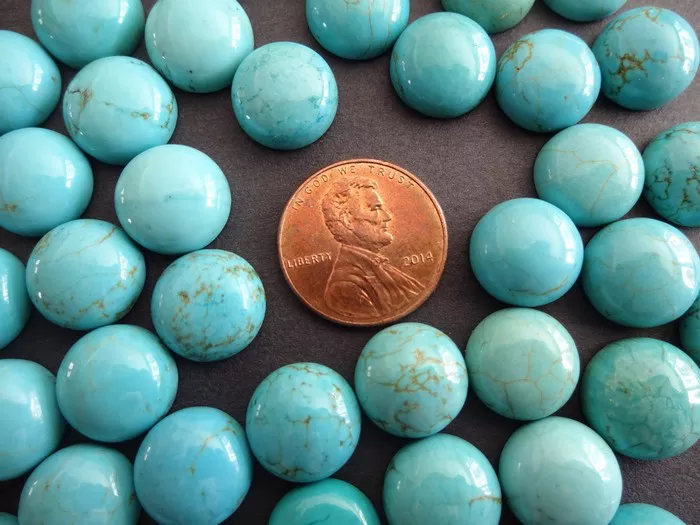Turquoise, with its mesmerizing hues ranging from robin’s egg blue to greenish blue, has captivated humanity for centuries. This cherished gemstone has adorned kings and commoners alike, prized for its unique beauty and cultural significance. However, the allure of turquoise has also made it a target for counterfeiters, leading to a market flooded with imitations. For those seeking authenticity, navigating this landscape can be challenging. In this article, we delve into the intricacies of identifying genuine turquoise, covering everything from price evaluation to testing methods and common imitations.
Price Evaluation
One of the primary indicators of genuine turquoise is its price. Real turquoise is relatively rare and therefore tends to be more expensive compared to its synthetic or imitation counterparts. Generally, you can expect to pay between $1 to $10 per carat for authentic turquoise. Be wary of prices that seem too good to be true, such as extremely low-cost turquoise jewelry or stones, as they often indicate a fake. Bargain prices may be tempting, but they are likely a result of lower-quality materials or artificial coloring.
Color and Appearance
Authentic turquoise exhibits a distinct range of colors, typically ranging from robin’s egg blue to greenish blue. The stone should appear opaque, with variations in color intensity adding to its allure. However, keep in mind that turquoise can also come in other shades, including light blue, sky blue, and even a rare yellowish-green known as “canary turquoise.” Natural variations in color are expected and can enhance the stone’s appeal.
When examining turquoise, look for uniformity in color distribution throughout the stone. Avoid stones with patches of noticeably different colors or inconsistent hues, as these may be signs of dyeing or synthetic materials.
Physical Properties
When assessing the authenticity of turquoise, consider its physical properties:
Hardness: Real turquoise has a moderate hardness of 5-6 on the Mohs scale, meaning it should not easily scratch under normal wear and tear. Use a fingernail or a copper penny (which has a hardness of around 3) to perform a scratch test on an inconspicuous area of the stone. Genuine turquoise should not show visible scratches.
Luster: Genuine turquoise exhibits a waxy or greasy luster when polished, unlike glassy or overly shiny imitations.
Acid Reaction: Authentic turquoise is non-reactive to acids. You can perform a simple test by placing a drop of vinegar or lemon juice on a small part of the stone. If there is no fizzing or bubbling, it is likely real turquoise.
Matrix Patterns
A unique feature of real turquoise is the presence of matrix patterns. These patterns are the result of the stone’s formation within host rocks, which create intricate veins or web-like structures within the turquoise itself. The matrix adds depth and character to the stone, showcasing its natural origins.
When inspecting turquoise jewelry or loose stones, look for these matrix patterns as they are a strong indicator of authenticity. However, be aware that some imitations may attempt to replicate these patterns artificially, so it’s essential to consider other factors in conjunction with the matrix.
Testing Methods
Several tests can be conducted at home to determine the authenticity of turquoise:
Scratch Test: As mentioned earlier, use a copper penny or a fingernail to scratch the surface of the stone gently. Genuine turquoise should not show scratches easily.
Acetone Test: Dip a cotton swab in acetone (nail polish remover) and rub it lightly on the stone. Real turquoise will not be affected by acetone, while imitations may lose color or show signs of damage.
Certification and Provenance
To ensure the authenticity of your turquoise purchase, consider the following:
Certification: Purchase turquoise from reputable jewelers who provide Gemological Institute of America (GIA) certifications or other reliable gemstone certifications.
Provenance: Inquire about the stone’s origin, as genuine turquoise is primarily mined in specific regions such as the United States (Arizona and New Mexico), Mexico, Iran, Chile, Egypt, and China. Stones from these regions are more likely to be authentic.
Common Imitations
Be aware of common materials used to mimic turquoise:
Dyed Howlite: Howlite, a naturally white mineral, is often dyed blue or green to imitate turquoise. Look for unnatural uniformity in color and texture.
Magnesite: This mineral is sometimes dyed and sold as turquoise. It lacks the characteristic matrix patterns and may have a chalky appearance.
Plastic and Glass: These materials can be molded to resemble turquoise but lack the natural properties and durability of genuine stone.
Conclusion
In conclusion, identifying real turquoise involves a combination of visual inspection, physical tests, and purchasing from reputable sources. By understanding the unique characteristics and properties of authentic turquoise, you can make informed decisions when adding this timeless gemstone to your collection. Remember to care for your turquoise jewelry by avoiding harsh chemicals and storing it away from direct sunlight to preserve its beauty for generations to come.


